Want to know everything about factory farming? Then you've come to the right place! Cows and pigs on lush, green meadows? That would be nice. Because even though this rural idyll may still be depicted on many product packaging, it is far from reality on most farms.
The animals that produce meat, milk or eggs, for example, are unfortunately just exploited high-performance machines in factory farming today.
In this article, I would like to tell you everything you need to know about factory farming. From the definition, facts and figures, causes and consequences, to the things we can do in everyday life to combat this problem and help the animals. Let's go!
Here you can find a short overview in advance:
Definition: What is factory farming?
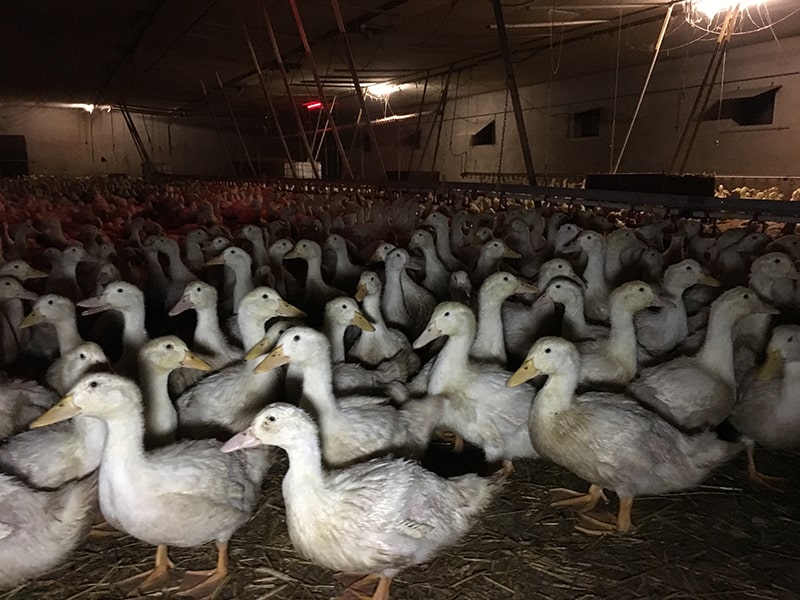
Business dictionaries define the term as follows: Factory FarmingIntensive livestock farming is the mass keeping of animals in cramped, stressful and usually inappropriate conditions.
The aim is to as many animal products as possible at the lowest possible cost to produce. The purpose of this is, among other things, the industrial production of meat, milk, eggs, leather and fur.
In our society, factory farming tends to be rejected. However, this is massively supported by the consumer behavior of each individual and - in contrast to the animals - kept alive.
Notice: Preference is given by those involved in factory farming to euphemistic terms such as "intensive animal husbandry" or "modern animal husbandry". You can see for yourself here whether this form of husbandry is really modern or should be modern.
What animals are being mass farmed in the first place?
We have certainly all seen pictures of cows, pigs or chickens in factory farming. But which animals are actually kept in this way?
Here a brief overview:
- Cows (Dairy cows, beef cattle and veal calves)
- Pigs (fattening pigs and breeding sows)
- Sheep (e.g. for meat, milk and wool)
- Chickens (broilers and laying hens)
- Ducks (e.g. for meat and clothing)
- Geese (e.g. for down and meat)
- Turkeys (e.g. fattening turkey)
- Minks, Foxes & Chinchillas (e.g. for furs)
- Fish (Aquaculture and "wild")
- Crustaceans (e.g. crabs, lobsters and shrimps)
- Rabbit (e.g. for meat, fur and angora wool, as laboratory animals and pets).
- Bees (honey bees)
- …
Why factory farming is a problem and subject to criticism
The problems and justified criticism are primarily based on ethical and ecological pillars.
Here are some Disadvantages of this form of intensive animal husbandry:
- Cramped spaces and cages without freedom of movement
- Keeping in stables without daylight
- Separation from dams directly after birth
- Life expectancy of animals is very short
- Animal mistreatment (e.g. beak trimming, tail trimming or Chick Shredding)
- cruelty to animals (Animal rights are disregarded)
- Treatment with antibiotics and residues in meat
- Overbreeding
- Inadequate controls
- Environmental problems as a result
Raising animals in factory farms at top speed is not in line with human values. Animals are emotional beingsjust like ourselves. In turbo husbandry, they can neither survive under their natural Surroundings still live their original instincts follow up
Tip: There are certain Tools of factory farming (e.g. suction weaners and beak trimmers), which are used to adapt the animals to the industry. I present them to you in the linked article so that you can see for yourself whether this is correct.
Why do people still keep animals in factory farms?
Despite the many problems, there must be a sense and purpose to factory farming somewhere, right? So that this doesn't get lost, here are the few Advantages intensive livestock farming:
- Cost benefits for farmers: Those who keep a lot of livestock on one area can benefit mainly through automation of feeding but also through volume discounts on feed.
- More animal foods: Inexpensive way can produce food in high demand very quickly.
- Cost benefits for consumers: Consumers also benefit from the cost savings made by fattening operators. Meat, eggs and milk, for example, are then very cheap.
It may be cheaper, but the Ultimately, it is the animals that pay the price compensation. And our environment, and therefore we humans ourselves, also have to contend with serious consequences.
Facts & figures on factory farming
To gain an understanding of the Scope of the problem statistics on factory farming are of immense importance. Here are some pertinent facts:
- In Germany alone, factory farming kills around 760 million animals per year.1
- Every year, around 77.4 million tons of meat in waste. More than 18 billion animals have to die to waste food.2
- The production of one kilogram of beef requires 15,415 liters of water needed.3
- 540 tons of antibiotics were used in agricultural livestock farming in Germany alone in 2022.4
- About 60 percent of the arable land in Germany are used to grow animal feed and not for direct food production.5
Tip: You can also find more informative facts in the articles Veganism statistics and Vegetarianism statistics.
Causes: Why does factory farming exist?
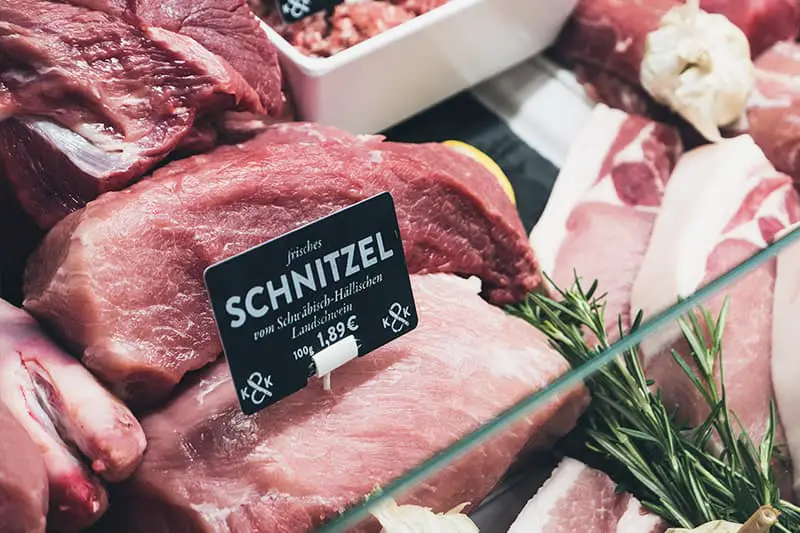
Basically, the causes of factory farming are explained quite simply. Logically, of course, they also go hand in hand with the advantages already mentioned.
Here are a Reasons for the existence of animal breeding at top speed:
- Profit orientation of the economy: If there is an opportunity - usually a legal one - to produce meat as cheaply as possible, then it will be used. In principle, you can't blame the operators of fattening stables for this. But ultimately, it is this profit orientation that is responsible for the enormous animal suffering in factory farming.
- Global population growth: Global population growth is rapid. If the world's population grows by over 65 million people every year6The global demand for foodstuffs such as meat, milk and eggs increases automatically.
- Increasing meat consumption: The demand for meat is also increasing because interest in meat products is growing in populous Asian countries (e.g. China and India). India has always been a country of vegetarians - but now people are being tempted by the example of industrialized countries to consume meat.7
- High interest in leather & fur products: Minks, foxes and chinchillas are actually wild animals. But they are bred in factory farming to meet the demand for fur clothing. And cows, for example, are also bred for leather production.
- Demand for foods with animal components: Classic milk, eggs and cheeses are made with animal ingredients. Animal gelatine is also frequently used for cornflakes, yogurts and Parmesan cheese. (see also Foods that are surprisingly not vegetarian and vegan)
Effects: What are the consequences of factory farming?
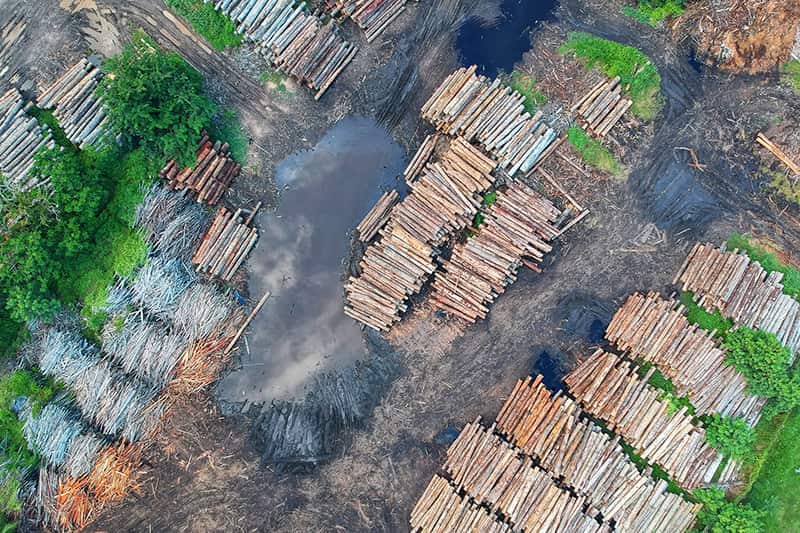
From the definition to the problem and its facts to the causes, we have now got to know factory farming in more detail. But to what extent does this form of animal husbandry affect Animals, the environment and us humans out?
Consequences for wildlife
First, let me give you a picture of the impact on wildlife. Here are some examples of corresponding consequences:
- Diseases: Mass housing and battery cages are a springboard for diseases such as mad cow disease, bird flu and swine fever. Given the cramped and unhygienic conditions in their own excrement, it is hardly surprising that farms have a high consumption of antibiotics.
- Physical pain: Pigs' curly tails are cut off while they are still alive and their teeth are ground down. In chickens, the so-called beak shortening and the Shredding of male chicks unfortunately a common practice. Factory farming means above all physical suffering - but it doesn't stop there.
- Mental suffering: Animals are sentient beings, just like us humans. Anyone who has ever seen the reaction of a mother cow when her calf is taken away immediately after birth will never forget it.
- Self-injury: Behavioral disorders such as cannibalism are unfortunately commonplace in the stressful conditions of factory farming. For example, pigs nibble each other's ears or chickens peck each other to the bone.
- Species extinction: The consequences of factory farming do not only affect the animals in the cramped cages themselves. Ultimately, the majority of all animals around the world suffer as a result. For example, the rainforest habitat has to make way for cattle pastures and arable land.
Consequences for the environment
Factory farming also affects our environment in a very special way. Here you can find some examples of its ecological consequences:
- Deforestation of the (rain) forests: Farmers have to import high-protein animal feed (especially genetically modified soybeans) because their own crops generally do not provide sufficient quantities or the necessary nutrients. In South America, for example, the Amazon rainforest is cut down to grow soy. You can find out more about this in the article about the Deforestation.
- Global Warming: Factory farming makes a decisive contribution to the Climate Change contribute. Animal transportation, husbandry and slaughter, as well as the cows themselves (methane) emit greenhouse gases. Global warming in turn results in increasing disasters such as forest fires, which in turn lead to an accelerated extinction of species.
- Soil degradation: The Manure from factory farming promotes crop rotation in the short term, but depletes the soil in the long term. Pesticides, fertilizers, nitrates and phosphates, the substances used in agriculture, do not simply disappear. For example, they poison the soil and nearby rivers.
- Water scarcity: If a kilogram of beef requires a total of 15,415 liters of water (e.g. growing feed, drinking or cleaning stalls), then this naturally has a decisive impact on the supply of drinking water, especially in rather dry regions. Learn more in the article about Water Shortage.
Consequences for us humans
Of course, factory farming also has both economic and health consequences for us humans. Here are a few examples:
- Antibiotics: Antibiotic-resistant germs were in almost all turkey meat samples in discount stores. One consequence of consumption for the human body is that the effect of taking antibiotics wears off when they are needed.
- Water scarcity: More than two thirds of our groundwater is contaminated with nitrate from agriculture.8 People in arid regions in particular are suffering from the increasing scarcity of drinking water. For example, when fields in warm South America have to be irrigated with later animal feed.
- Manure transports: Factory farming produces significantly more liquid manure than the farms can use to fertilize their fields. This results in additional costs for transportation and disposal.
- Odors: Of course, the odors associated with factory farming are also a burden on the surrounding area. For example, regional tourism is adversely affected as a result.
- Mental stress: Already the sight of cruelty to animals on the television screen brings tears to many people's eyes. However, even as employees, it is not easy to ignore the work in huge fattening farms, where as much animal food as possible has to be produced as cheaply as possible. The Psychological stress is extremely high.
Solutions: What can you do against factory farming in everyday life?

Just as understandable as the causes are the solutions in the fight for a species-appropriate and sustainable environment. fair treatment of animals. Here are a few solutions that you can use in your everyday life every day. Making a statement against factory farming simply by following your heart.
Read books
It is not only through stark images in documentaries, but also by reading books about animals and how they are kept that you can educate yourself and ultimately others. educate people about factory farming and counteract it.
Here are some books you should definitely read:
- The pig system* - How animals are tortured, farmers are driven to ruin and consumers are deceived, by Matthias Wolfschmidt.
- The disposable cow* - How our agriculture is burning up animals, ruining farmers, wasting resources and what we can do about it, by Tanja Busse.
- Eat animals* by Jonathan Safran Foer.
- Peace Food* - How giving up meat and milk heals body and soul, by Rüdiger Dahlke.
- Think animals* - On the rights of animals and the limits of man, by Richard David Precht.
- The soul of animals* - Faces. Feelings. Stories, by Sabine Remy-Schwabenthan and Walter Schels.
Reduce or stop meat consumption
If you'd rather hurt the mass meat industry than the animals themselves, then giving up meat is the way to go. the best remedy for this. In the article "Becoming a vegetarian" you get the best tips for it!
Generally avoid animal ingredients in food
Conscious meat consumption can make a big difference. But if you avoid animal-based foods as a matter of principle, your Even greater impact in the fight for fair animal husbandry.
For example, I have the classic Cow's milk replaced by oat milk - and I'm missing absolutely nothing in the ambiguous sense. Today I also enjoy vegan cheese (almond-based) and make sauce with vegan soy cream.
At Typical rookie mistakes made by vegans and vegan life you will find valuable tips for the changeover.
I can also recommend the cookbook Vegan & Easy* by Bianca Zapatka.
Reduce or stop consumption of products made from animal material
Whether Leather shoes, down jackets, woolen blankets or fur coatsIf it is real animal material, it is highly likely that an animal had to suffer for it. As a conscious consumer, you can counteract the underlying factory farming by consciously avoiding such items of clothing.
Support animal welfare organizations
Of course, you can also make a big difference through financial or active support from Organizations dedicated to the protection of animals have. Those responsible stand up for the rights of animals every day - or rescue them from large companies.
Start petitions
We are so incredibly well connected these days! It would be a shame if we didn't make use of it! On the many petition portals today, you can submit an appeal or a petition at any time. Start signature listthat have a Eliminating grievances in our society should. In this way, you can campaign for stricter laws to protect "livestock", for example.
View documentations
The images in this article are still relatively harmless. The impressions from films still have an effect much more impressive.
If you want to know more about the The reality of factory farming want to know, you should definitely read the following vegan documentaries learn from them and share your knowledge with others:
- Cowspiracy*: In this documentary you will see the abysses of the meat industry. It also sheds light on why environmental organizations often relativize meat consumption and its connection to climate change.
- Food Inc*.: The 2008 documentary conveys the harmful impact of the food industry on our health and our environment.
- Dominion (free of charge on YouTube): This documentary from 2018 conveys very current conditions at companies that were able to record hidden cameras. More at Dominion film.
- Earthlings: The film is from 2005 and shows really memorable footage from factory farming.
Factory farming is brutal and no longer in keeping with the times
That is, of course, my personal opinion. But after the embedded video at the latest, anyone who thinks factory farming is in keeping with the times should change their mind. Question your opinion.
After all, we are cutting down rainforests to breed animals all over the world at high speed, cutting off parts of their bodies so that they do not injure themselves due to stress in cramped cages with no daylight, and giving them antibiotics so that they have any chance of survival.
Factory farming can only be described as "modern animal husbandry" because it profit-oriented works - and not at all because it is contemporary.
"The world is not an inferior product, and animals are not a fabrication for our use."
Arthur Schopenhauer (more at Animal Welfare Quotes)
What is your opinion on factory farming? And do you have any questions or suggestions about the article? Then I look forward to your comments.
Stay kind to all creatures,

PS: Want to know more about the current challenges facing our society? Then be sure to take a look at the article on the biggest environmental problems of our timemany of which are accelerated by factory farming.
References:
- Albert Schweitzer Stiftung: Slaughter figures down again in 2021 (as of 25.02.2022), available at https://albert-schweitzer-stiftung.de/aktuell/schlachtzahlen-2021-erneut-gesunken. [23.01.2025]. ↩︎
- R. Klatt: Lebensmittelverschwendung Fleischindustrie - 18 Milliarden Tiere landen jährlich im Abfall (Stand: 05.12.2023), available at https://www.forschung-und-wissen.de/nachrichten/umwelt/fleischindustrie-18-milliarden-tiere-landen-jaehrlich-im-abfall-13378390. [23.01.2025]. ↩︎
- Albert Schweitzer Foundation (2016): What's behind a kilogram of beef, available at https://albert-schweitzer-stiftung.de/aktuell/1-kg-rindfleisch. [23.01.2025]. ↩︎
- PETA Deutschland e.V.: Antibiotics in factory farming: This is how dangerous their use is (as of 10.04.2024), available at https://www.peta.de/antibiotikaeinsatz-in-deutschen-staellen. [23.01.2025]. ↩︎
- Federal Office for Agriculture and Food (BLE): What grows in Germany's fields?, available at https://www.landwirtschaft.de/tier-und-pflanze/pflanze/nutzpflanzen-allgemein/was-waechst-auf-deutschlands-feldern. [23.01.2025]. ↩︎
- Statista GmbH (2022): World population growth, given in different time units, available at World population growth, given in different time units. [23.01.2025]. ↩︎
- Sebastian Zang: Meat consumption in India, available at https://indienheute.de/fleischkonsum-in-indien. [23.01.2025]. ↩︎
- Umweltinstitut München e.V.: Factory farming endangers our drinking water, available at http://www.umweltinstitut.org/themen/landwirtschaft/massentierhaltung/verschmutztes-grundwasser.html. [23.01.2025]. ↩︎

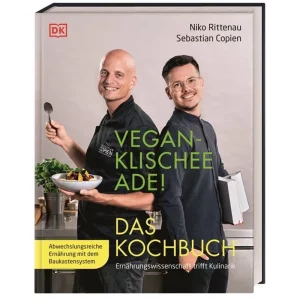

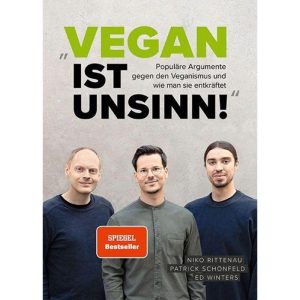


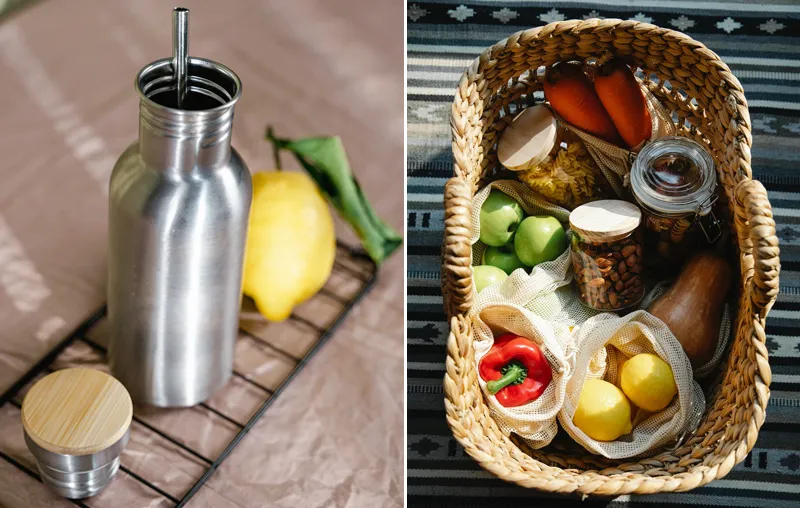

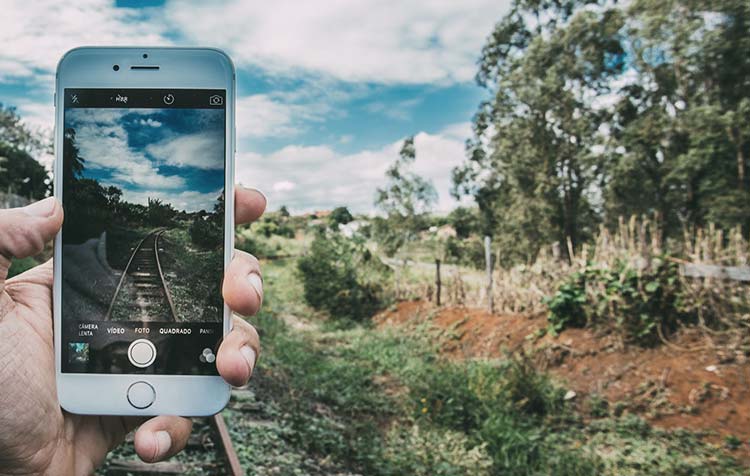
Thank you for the valuable information. One thing I have learned here in any case: we must LOOK. And then each of us must draw the consequences for ourselves!
Hello Marianne!
Thank you for your feedback! Look and act, exactly 🙂
Happy Easter Monday,
Christoph